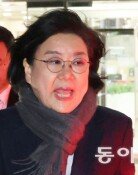[Opinion] Gropius and Rainbow Color
[Opinion] Gropius and Rainbow Color
Posted February. 20, 2005 23:10,
As a would-be artist from early age, I despised neutral and dull tints as opposed to the primary colors Gogh and Matisse had used. Without the courage to study fine art, I settled for architecture at university, but never stopped going after primary colors. Korea at that time might have been influenced by Le Corbusier, who usually applied original colors to his design drawings as well as structures, and visually pioneering modernists, who showed strong enthusiasm as much for primary colors as for non-obscure ideologies. Around that time in Korea, electric fans produced by Keumseong, Saenara Motors, newly built houses in rural communities during the Saemaeul Movement (a rural development project) were all in primary colors such as red and blue.
Those primary-color-crazed times have passed. Now, blazing original colors cannot be found in Yonsamas muffler, photos in Chamsari (well-being), a publication, the interior décor of apartments in Gangnam, and even flowers on the streets. Instead, soft and drowsy pastels are all over the place. Primary colors look somewhat unsophisticated and uneasy, just like they do in North Korean propaganda materials. Recently, even drafting pencils are produced in pastels.
Along with neutral hues, gray has come back to life. To modernists whose distinction between black and white was clear, gray was a color for wobblers who never showed their true colors. But todays fashionable people love gray in various gradations. If one gets beyond the bonds of dichotomy, that person can see gray as the all-embracing color that includes both this and that. In the written work, Plea for the Intellectuals by Sartre, gray is the color of intellectuals, and is destined to help overcome class conflicts by internalizing them.
When asked what is his favorite color, the founder of Bauhaus, Gropius, who sought to recreate everything, including spoons, cities and even a world with a new generation of aesthetics, answered: Every single color. He could work with those extraordinary figures such as Klee and Kandinsky at Bauhaus because he put more emphasis on the harmony of different shades of colors than one particular color. Indeed, one color or two cannot make a rainbow or a multicolor-striped traditional Korean jacket. It seems that politicians and artists in Korea are so preoccupied with dichotomy, taking sides, distinctness and controversies over ones ideological identity that they forgot the importance of the above harmony.
Kang Hong-bin, Guest Editorial Writer, Urban Planning Professor at University of Seoul, hbkang@uos.ac.kr





![“한동훈, 정치생명 걸고 무소속 출마해 평가받는 것 고려할만”[정치를 부탁해]](https://dimg.donga.com/c/138/175/90/1/wps/NEWS/IMAGE/2026/01/19/133186982.1.jpg)

